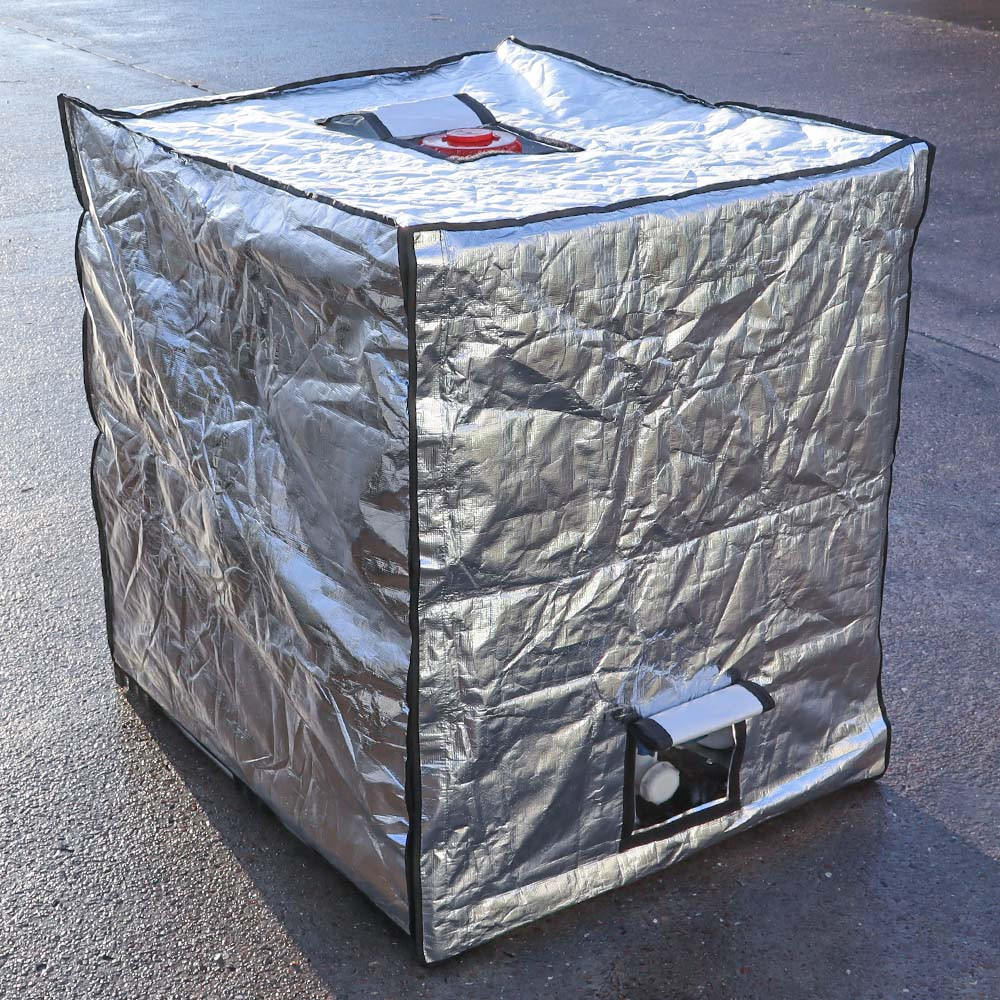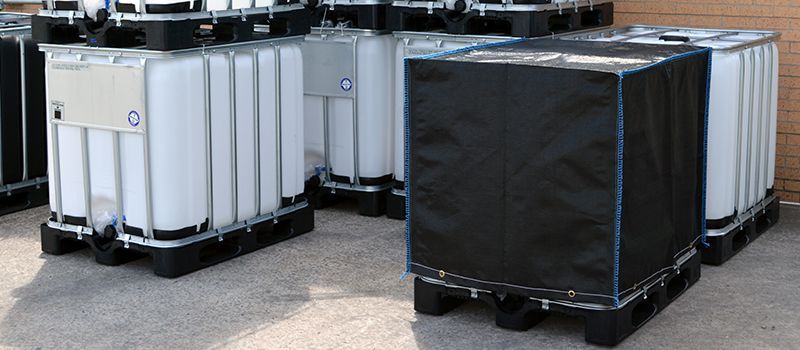Intermediate bulk containers (IBCs) are used by many organisations to store liquids and keep them protected, both during transit and storage. Despite being a reliable and cost-effective solution, IBC tanks do have their vulnerabilities, one of which is low temperatures. While IBC insulation can be used as a proactive measure to address this vulnerability, its suitability may raise questions.
If you’re unsure about whether IBC tanks should be insulated, delve into our comprehensive article.
What is the purpose of IBC insulation?
How to keep an IBC tote from freezing

What is an IBC?
An intermediate bulk container, also known as an IBC, is a type of large container used across a range of industries for the transportation and storage of liquids, ingredients and materials. IBCs are designed to facilitate the handling and transportation of these materials more efficiently compared to other containers.
Do IBC tanks freeze?
IBCs are used by many different organisations across a range of industries. For this reason, it means that they have many different applications and are often exposed to low temperatures, whether that is during transit or storage.
Whether an IBC tank will freeze depends on what’s inside and how long it has been exposed to low temperatures. If an IBC tank is exposed to low temperatures for a prolonged period, there’s a higher chance that it may freeze. This extended exposure not only risks negatively impacting the integrity of the stored materials, but it can also lead to the IBC tote cracking and getting damaged.
What is the purpose of IBC insulation?
IBC insulation is primarily designed to maintain a consistent temperature. Yet, maintaining a consistent temperature serves various other purposes, as listed below.
Prevent IBC tanks from freezing and cracking
IBCs are often stored in cold conditions, however, this can result in the containers freezing and cracking due to temperature changes. The role of IBC insulation in this context is to act as a protective barrier by preventing the contents of the container from dropping below their freezing point. By doing so, the insulation not only prevents the contents from freezing but stops the IBC from cracking due to the increased pressure.
Preserve the integrity of the contents
Products stored in IBCs may have specific temperature requirements for stability and integrity. IBC insulation helps to create a more controlled environment within the tote, protecting the contents from temperature fluctuations that could negatively affect their quality and integrity.
Enhance operational reliability
IBC insulation helps to maintain a consistent temperature, ensuring that the totes perform as expected and don’t hinder operational efficiency. By creating a controlled temperature environment, operational processes remain stable and predictable, providing you with peace of mind.
Contribute to cost savings
Insulating IBCs has a positive impact on cost savings. This is because IBC insulation helps prevent product loss that may occur due to damage caused by freezing. Additionally, insulation can contribute to the longevity of IBCs by minimising stress on the container walls. This, in turn, reduces the likelihood of the container cracking, extending its lifespan.
Types of IBC insulation
IBC insulated covers and jackets
IBC insulated covers and jackets are designed to insulate and maintain the temperature inside an intermediate bulk container. Made from insulating materials, these covers reflect heat and UV rays, providing a protective shield around the tote and its contents. These IBC-insulated jackets are lightweight and easy to apply, making them ideal for use in warehouses or during transit.
IBC heater jackets
IBC heater jackets are equipped with an electric heating element to control and maintain the temperature of the contents. Widely employed across various industries, these IBC heater jackets play a crucial role in warming and reducing the viscosity (thickness) of diverse industrial fluids, such as resin, cooking fats, and oils. However, they require a power source and are more passive than some other forms of IBC insulation.
How to keep an IBC tote from freezing
Here are just a few ways in which you can prevent an IBC tote from freezing:
Store your totes indoorsStore your totes indoors
The most effective way to keep an IBC tote from freezing is to store them indoors. Indoor storage protects the containers from temperature fluctuations, ensuring that are kept in a controlled environment. While this solution may seem straightforward, it is often not possible due to space limitations or operational requirements.
Group your IBCs
Although grouping IBCs doesn’t directly insulate them, it can be a practical measure to reduce the surface area that is exposed to colder temperatures. When IBCs are placed together, they create a larger surface area, minimising the impact of the colder temperatures on each container. Grouping IBC totes can be a helpful strategy when indoor storage is not an option.
Use IBC insulation
IBC insulation, such as heater jackets and covers, can be applied directly to the exterior of the tote. These covers add an extra layer of protection to the IBC, reducing heat loss and protecting the contents from freezing temperatures.
Use circulation
Periodically circulating the contents within an IBC helps prevent localised cooling, reducing the risk of the tote freezing. This is because continuous circulation ensures that the temperature throughout the IBC tote remains consistent, disrupting the formation of ice crystals.
Use a heating mat
An IBC heating mat can be used to control and maintain the temperature of the contents within an IBC tote. Installed on the outside of an IBC between the tank and the pallet, the heating mat incorporates an electric heating element connected to a power source. These mats are typically designed for single-use or long-term use on a specific IBC, after which they are disposed of.
Use an internal heating system
An internal heating system can be used to protect chemicals and viscous foodstuffs that are notoriously difficult to process. The internal heating system heats the contents directly with the base of the heating unit next to the outlet valve. This prevents thermal damage or the burning of the liquid contained within an IBC, offering an effective strategy to prevent an IBC from freezing.
Browse our range of IBC heater jackets and covers
Protect your IBC with our range of IBC heater jackets and covers. Whether you are after IBC insulation covers or heating mats, we have the solution required to prevent your IBC tote from freezing in colder temperatures.
For further information about our range of IBC insulation products, please contact our sales team on 01777 858009 or email sales@kingfisherdirect.co.uk.





